When the Cape Dory 30 entered production in 1976, it was the largest boat in the expanding line of the Taunton, Massachusetts boatbuilder. In 1986, when production ceased, over 350 Cape Dory 30s had been built, and what had been the largest boat in the company’s fleet was one of the smallest.
In 1986, Cape Dory introduced the Cape Dory 30 Mk II, an entirely different boat, designed in-house (rather than by Carl Alberg), longer on the waterline, 1 1/2′ wider, and with a far roomier and more modern interior.
The old Cape Dory 30 was designed as a ketch, with cutter or sloop rigs optional. In the middle of the production run, the more efficient cutter rig replaced the ketch as standard. The ketch remained an option.
The Cape Dory line always consisted of traditional- looking, long-keel cruising boats, and their appeal has been strongest on the East Coast, particularly in New England, a well-known hotbed of sailing reactionaries.
Sailing Performance
No one buys a Cape Dory looking for a flashy speedster. The original ketch rig has a lot of windage, and relatively small, inefficient sails. The rig does, however, give the boat a distinctly “shippy” traditional appearance.
A PHRF rating of about 220 shows the ketch to be a slow boat. By way of contrast, the old original C&C 25 carries about the same rating. The cutter-rigged Cape Dory 30 is about 15 seconds per mile faster.
The Cape Dory 30 was originally equipped with worm gear steering. This type of gear is powerful, foolproof, and requires no steering pedestal in the cockpit. The wheel will also hold the rudder in position without a brake. The disadvantage is that there is almost no rudder feedback, so that it’s hard to tell when the boat is properly balanced. Worm gear steering will not make you a better sailor.
The worm gear steerer is especially compatible with the original ketch rig. Since the mizzen is stepped in the middle of the cockpit, it’s nice to get the steering wheel back aft where it won’t take up any usable space. The top of the steering gear box also serves as a good helmsman’s seat.
With the cutter rig, it became feasible to put a more conventional pedestal steerer in the boat. However, moving the steerer further forward meant that the old steering box—now a storage locker—was too far away from the wheel to be used as a seat.
In practice, you usually sit to the side of the wheel with a pedestal steerer, not behind it. But this re- quires a wheel that is big enough to let you get far enough outboard to see sail trim. Most helmsmen will only sit directly behind the wheel when the boat is under power and they can see straight ahead, with no sails in the way.
The big steering wheel that’s the easiest to use with pedestal steering almost requires a T-shaped cockpit for easy maneuverability. The Cape Dory 30 stuck with the straight bench cockpit seats, and used a fairly small destroyer wheel. Although you don’t need the leverage of a big wheel on this boat, it will make steering less tiring, and there is room between the seats to fit a larger-diameter wheel. It would make it necessary to climb over the seats to go forward, however.
Most owners report that the boat—with either rig—is easy to balance under sail. The percentage reporting difficulty in balancing the boat complain of excessive weather helm on a close reach.
Hard steering when reaching is a common complaint on boats with attached rudders and a lot of rake to the rudderpost. The Cape Dory 30 does have a relatively efficient Constellation-type rudder, even if it is located about 2′ further forward than it would be with a comparable fin keel and spade rudder underbody.
Weather helm when reaching is frequently caused by overtrimming the main. On a boat without a vang, the boom tends to lift quickly as the sheet is eased, and the top of the sail twists off and begins to luff. Thinking they’ve eased the sheet too much, many sailors will at that point overtrim the main, shifting the draft of the sail aft and creating weather helm. Under those conditions, the proper thing to do with the Cape Dory 30 is use mainsheet tension to create a fair leech, then ease the traveler down to keep the whole sail working.
On both rigs, the mainsail is controlled by a traveler over the main companionway.
With the ketch rig, the mast is stepped further forward than the cutter, and the mainsheet attaches to the boom about two-thirds of the way aft, giving reasonable leverage. With the cutter, the mast location means that the mainsheet attaches almost exactly at the boom midpoint, reducing leverage and making the sail somewhat harder to trim.
In either case the traveler location at the forward end of the companionway is out of the way, but it makes installing a cockpit dodger more difficult.
The cutter’s main boom is at a reasonable height, but the taller helmsman should still watch his head when tacking.
With the advent of modern headsail reefing systems, the cutter rig is really superfluous on this boat. The small gap between the forestay and headstay makes it difficult to tack a big genoa, yet you really need a big genoa if this fairly heavy boat is to be properly powered in light air. The double head rig is fine in breezes over 15 knots, but in lighter air it’s much slower than a good number one genoa.
According to owners, the boat’s only sailing weakness is light air. With a lot of wetted surface and an inefficient foretriangle, the boat is simply not going to be fast in very light air. All in all, though, owners say the boat is faster than they expected it to be in all conditions.
With a 40% ballast/displacement ratio, the Cape Dory 30 is reasonably stiff despite the very narrow beam. You can get stability with a lot of ballast down low, or with a lot of beam. The Cape Dory 30 gets it from a lot of ballast, placed low in the hull.
With less weight aloft, the cutter should be slightly stiffer than the ketch.
Both the ketch and cutter rig use simple, untapered aluminum masts, stepped on deck. With a stiff section and double lower shrouds, these rigs are fairly foolproof.
Engine
Unlike many builders, Cape Dory put diesel engines in every inboard-powered sailboat they built after 1975. You won’t find an Atomic 4 here.
What you will find, unfortunately, is an engine installation and selection that is somewhat less than ideal.
Because this is a narrow boat with slack bilges, it wasn’t possible to get the engine far enough down in the bilge to be out of the way in a normal installation. Instead, the engine is mounted under the cockpit, using a V-drive. The engine is kept out of the way, but out of sight in this case means poor access for servicing. Getting to the alternator belts for adjustment, for example, requires crawlingunder the cockpit through a locker.
The original engine was a single-cylinder Yanmar diesel rated at 12 hp. This engine is too small for the boat, and single-cylinder engines are notorious for their vibration.
Starting with 1977 models, the Yanmar diesel was replaced with a Volvo MD7A, rated at 13 hp. The Volvo engine has more displacement, and has two cylinders. Nevertheless, some owners still complain that the boat is underpowered with the Volvo diesel.
Despite the long keel, the Cape Dory is reasonably maneuverable under power. The exception is handling in reverse, which according to many owners varies from unpredictable to impossible. This is not a characteristic unique to this boat; it is a fault of most long-keel boats with attached rudders. You learn to act as if reverse were nothing more than a set of brakes—not very good ones, at that.
Other than its location, the engine installation itself is pretty good, with dual fuel filters, 1″ bronze shaft, and oil drip pan under the engine. The fuel tank capacity of 20 gallons should give well over 200 miles range under power with any of the engines.
During the 1983 model year, a switch was made to a two-cylinder Universal diesel. We would definitely prefer a boat with either the Volvo or Universal engine over the original small Yanmar.
Construction
The Cape Dory 30 is solidly built, although there is nothing particularly innovative or unusual about the construction. The hull is a solid fiberglass laminate, the deck is balsa cored. No owners in our survey mention problems with either hull or deck construction.
A number of owners have reservations about the hull-to-deck joint, which is not through-bolted. Other owners mention that there are washers but no backing plates on deck hardware such as lifeline stanchions. Although none report problems either with deck hardware or the hull-to-deck joint, their concerns are valid. Backing plates on deck hardware help distribute loads, and reduce the chance of stress cracks around fittings. Likewise, a through-bolted hull-to-deck connection offers a foolproof mechanical backup should the polyester putty bond between the hull and deck fail. Bolts won’t stop leaks, but a through-bolted joint won’t come apart until the surrounding glass fails.
As in most boats this size, the lifeline stanchions are only 24″ high. This is too low for any real security—the lifelines strike most people just about at knee height, the right height for tripping. There are some bolts through the hull-to-deck joint, since both the lifeline stanchions and chainplates fasten through the inward-turning hull flange. We would, however, prefer to see closely-spaced bolts throughout the length of the joint.
Chainplates are cast bronze lugs bolted through the hull and deck flange. As long as the hull and deck are adequately reinforced—and they are, in this case—this type of installation is fine.
We’ve seen the same general type of chainplates on 40′ boats with Lloyds certificates, so they can’t be all bad.
All Cape Dory boats came with deck hardware— cleats, winch islands, bow fittings, seacocks and chainplates—by Spartan, a sister company to Cape
Dory. This is good stuff that will last the life of the boat and then some. The only disadvantages are that it is heavy, being bronze, and is not very well finished.
Going from burnished to polished finish just about doubles the price of a piece of hardware— polishing is very labor intensive—and on most Cape Dory 30s you’ll find burnished hardware. It’s rugged, though.
There’s a fair amount of exterior teak on these boats, including cockpit coamings, toerails, hatch trim, and eyebrow trim around the cabin on later models. This gives the boat a yachty appearance, but it does increase maintenance.
You could get the Cape Dory 30 in any color you wanted, as long as it was Cape Dory white with a nicely-contrasting tan deck. Several owners report discoloration of the colored portion of the non-skid decks. The non-skid itself is quite functional.
Early boats in this series have an unusual water tankage arrangement. One tank is plumbed to the head sink, the other to the galley.
Since you use a lot more water in the galley than in the head, that tank runs out first. Many owners have replumbed these tanks so that you can use the entire water supply.
Some early boats also have the water tank fills located below, which may be fine for keeping salt water out of the tanks, but can make for a fire drill when trying to fill them without making a mess. On later boats there is a 30-gallon water tank under each main cabin settee, and the system is correctly plumbed.
There are proper seacocks on all fittings below the waterline.
The deck-stepped rigs in both the cutter and ketch are well engineered, as no owners in our survey report any deck deflection or stress cracking in that area.
Unlike a lot of 30-footers, the Cape Dory 30 was designed as a small seagoing boat. For example, it has a reasonable bridge deck, although it is lower than the main cockpit seats and the cockpit coamings.There is also a sea hood over the main companionway hatch.
The main companionway is an unusual design. The vertical part of the companionway is fairly narrow and straight sided—good features in terms of seaworthiness. The sliding hatch and its opening are wider, letting more light and air below.
Relatively few owners in our survey report gelcoat blistering. The only glasswork complaints were gelcoat crazing in an early model, and discoloration of the gelcoat in the hull liner, cabin overhead, and non-skid areas in the deck.
Interior
Compared to newer 30-footers, the Cape Dory 30 is cramped below. The boat is more than a foot narrower than the typical cruiser/racer built today, and about 2′ shorter on the waterline. There’s no way around it: this is a small boat.
Within these limitations, the interior layout is pretty good. There are V-berths forward, with a dropin insert to form a double. The forward berths are narrow at the foot.
Ventilation in the forward cabin is provided by two opening ports plus an overhead Bomar aluminum- framed hatch. There are drawers and lockers beneath the berths.
The head compartment utilizes the full width of the boat, the way it should on a boat this narrow. Outboard of the toilet is a hanging locker. Opposite the toilet there is a dresser with sink.
A grate in the head sole for a shower was standard equipment, but the pressure water necessary to use it was an option. If you’re going to spend more than a weekend on a boat, a shower is almost mandatory.
Inexplicably, the head sink and shower drain into the bilge. This is unacceptable. Because of the boat’s low freeboard, the head sink is too low to be plumbed directly overboard if you expect it to drain on port tack. The best solution, although it is somewhat awkward, would be to install a closed sump tank in the bilge. It could be emptied overboard by either a manual or an electric pump. You wouldn’t want your bathroom sink and shower to drain into your basement, would you?
Two opening ports plus a cowl vent in a Dorade box provide ventilation in the head. If it were our boat, we’d also install a small venting hatch or another Dorade box over the head, even though the standard arrangement is better than you find on many larger boats.
The main cabin has settees which double as berths along either side. There are narrow shelves above and outboard of each settee.
Since the water tanks take up most of the volume below the main cabin settees, there is little storage space available in the main cabin.
As in most boats this size, the main cabin table folds down from the forward main bulkhead. It will seat four, although in a somewhat cramped fashion.
In the original layout, the galley aft runs the full width of the boat. On the port side there is a pressurized, two-burner gimbaled alcohol stove with oven.
If you want to stay with alcohol cooking fuel, we recommend switching to a non-pressurized stove such as the Origo. Despite the fact that alcohol fires can be extinguished with water, pressurized alcohol stoves can be dangerous because most people underestimate the volatility of the fuel.
The sinks are aft of the stove, and are somewhat difficult to reach because the slope of the bilge intrudes into the space where you would normally stand.
Opposite the stove there is a good galley dresser containing an icebox, storage bin, and drawers. The icebox drains into the bilge. This is a poor arrangement, since organic matter from the icebox will inevitably contaminate the bilge, even if it is pumped daily. The icebox could either be pumped into the galley sink, or into the sump you install for the head sink and shower.
With this layout, you use the top of the icebox as a navigation table. The lack of a good place to do chart work is a common failing in older designs of this size.
Late in the production run, the interior layout was “modernized” by adding a quarterberth and small chart table. The arrangement takes up a lot of the space that was formerly used for the galley. You get another berth—which you don’t need—at the cook’s expense. We don’t think this layout is an improvement, despite the fact that the navigator gets his or her own workspace.
Headroom on centerline in the main cabin is just over 6′, with slightly less further forward.
Main cabin ventilation is good, with four opening ports—excellent bronze Spartan ports—and an overhead Bomar hatch. We’d add a pair of cowl vents in Dorade boxes on either side of the ventilation hatch. The space is there, and the job is pretty simple. Although the galley has reasonable storage, there is little storage space in the rest of the boat. This makes the boat unsuitable as a long-term cruising boat, unless you want to do a fair amount of modification to the interior.
Joinerwork and finishing detail throughout are of good production boat quality. Since a lot of teak is used for interior woodwork, the boat is quite dark below.
You could brighten this up a lot by finishing the interior with gloss varnish, rather than the standard satin oil finish.
Conclusions
With her narrow beam and short waterline, the Cape Dory 30 is a lot smaller than newer boats of this length and displacement. The boat will have a strong appeal to the traditionalist who places a high value on appearance.
The boats are well constructed, suited for serious coastal cruising, and perhaps for limited offshore sailing.
Cape Dory boats were quite expensive, but they hold their value well. When production began in 1976, the Cape Dory 30 had a base price of about $29,000. By the time production ceased a decade later, the price had almost doubled—but so had the price of just about everything.
Although some might prefer the “shippiness” of the ketch rig, the cutter is both faster and more practical. Some boats were built as sloops, and this would be the best rig of all. Inevitably, the Cape Dory 30 will be compared to the Alberg 30. The Cape Dory 30 is longer on the waterline, wider, heavier, and has a roomier interior. The Cape Dory 30 cutter is slightly faster than the sloop-rigged Alberg 30.
Our choice in a Cape Dory 30 would be a latemodel cutter with full-width galley, Edson pedestal, and the Volvo or Universal diesel. For the money, you get a well-designed traditional boat that is a good coastal cruiser for a couple or a small family. We don’t think the boat is big enough for four adults for anything more than weekend sailing.
If you want the looks of an older boat but the construction details and diesel engine found in newer boats, the Cape Dory 30 is a good choice.



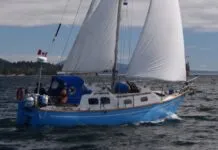



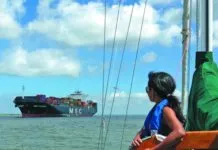
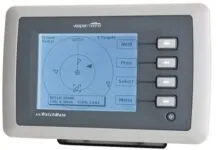
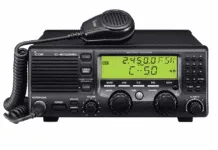

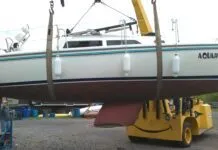
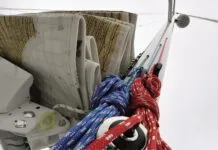
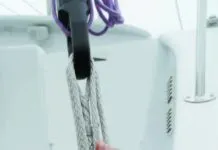
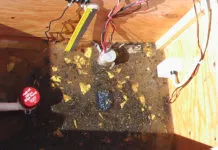
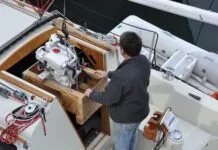

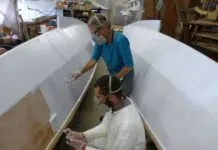












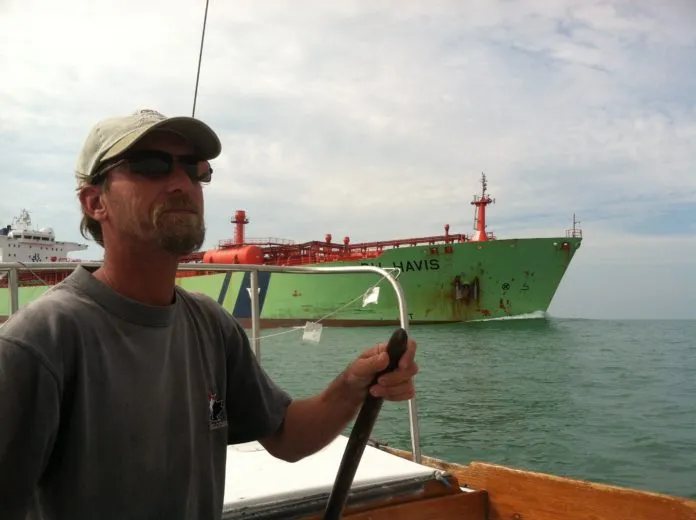
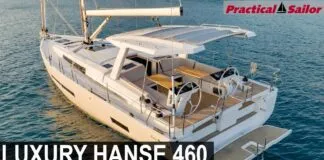




Some photos would be useful in an article like this. Remember a photo is worth how many words?
Regards
Agree – at least one picture of the entire boat would’ve been appreciated
Good article. very informative
If you’re a sailor you’re proud to show your boat! Where are the photos of this boat???
Pictures would’ve been great
If readers are accessing this story on-line, a quick search for “Cape Dory 30 Mark II” produces 1.7 million images.
…so even less excuse for not putting a couple here… 🙂
Cape Dory apparently ventured into trying to have a little more modern design by producing around 75 or so boats with a fin keel and sloop rig – Intrepid 9m by Cape Dory. Ours was originally outfitted with the Volvo diesel but was at some point changed to a 27hp Yanmar 3 cylinder. Much of the Cape Dory 30 interior description sounds similar. It’s been a slow project for us with much to do.
This article was previously published in the 6th edition of Practical Boat Buying in 2003, and perhaps in earlier editions as well. Originally, the article included a sail plan and line drawing of the layout.
i have the Cape Dory 31. One foot difference makes a big difference in the layout. I love the boat.
I bought a 1978 Cape Dory 30 ketch a few years ago, my first big boat, in the hopes of coastal and some blue water cruising. I appreciate the comments made in the article, there are many good points made. A few comments/questions:
-I agree with the discussion of backing the boat; I cannot claim to do it well, especially in crosswinds out of a slip. Nice to know I am not alone.
-Not sure I understand why the ketch would be more tender than the cutter; its mainmast is a foot or two shorter with a resulting shorter lever-arm.
-It should be mentioned that the ketch has a longer on-deck space than the cutter, making it possible to carry a small dinghy on deck; I’m not sure this would be possible with the cutter.
-The ketch allows flexibility in sail handling: I can sail with furling genoa and mizzen with good balance, raising and trimming without leaving the cockpit. This is a real blessing for single handing, of which I do a fair amount.
-I have installed a Schaefer furler for the genoa, replacing the much older poorly functioning furler that came with the boat. I can self tack the genoa using the jibboom that came with the boat, or raise a storm jib with the jibboom and self tack with a sail well back off the bowsprit. Again, nice for cruising, single handing, and heavy air.
-It probably should be mentioned that the Cape Dorys have internal ballasted molded in keel. This may be an advantage in an older boat since one does not have to worry about aging keel bolts. The 4 foot draft, with long keel and attached rudder is an advantage in places like the Louisiana Gulf Coast with plenty of shallow, quite muddy water. Yes, unfortunately, I know this from experience.
-Recent hurricanes have put a number of boats ashore. Friends from Texas have told me that one of their members’ Cape Dorys went ashore losing mast and rigging, but little damage to the hull. Anecdotal, but the hull is thick with good glasswork.
-I agree with the assessment of the bronze steering gear that came with the boat. It seems bulletproof and simple. Any assessment as to whether it would work with an autopilot system?
-thanks for the article.
How does this boat look like, no photos, Great article, not.
For those not entirely reading the fine article…
“ By Darrell Nicholson – June 14, 2000”
Solid review.
What the cape dory cutter rig really needs is a Bowsprit a rather long one at that. Put a 3-4 ft bow sprit on it move the head stay out to the end and the move the staysail stay to where the head stay was and you then have a far better sail plan and you would increase the displacement to sail area ratio to quite speedy levels. Also the main needs a boomvang. The mast without a bowsprit is still too far forward for an efficient cutter rig. (Ona cutter the mast should really be center of the sail plan. I can see looking at the standard sail plan why it would have excessive weather helm not enough head sail area to overcome the main and over all not enough sail area. Carl Alberg included a small bowsprit on the Cape dory 28 and looking at the design of the 30 most of the extra length was added aft. Of the keel. I would really like to see what a long bowsprit would do (would also help with anchoring as you could get the bow roller further out)